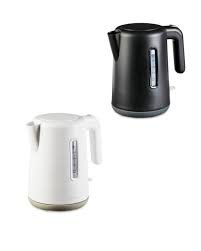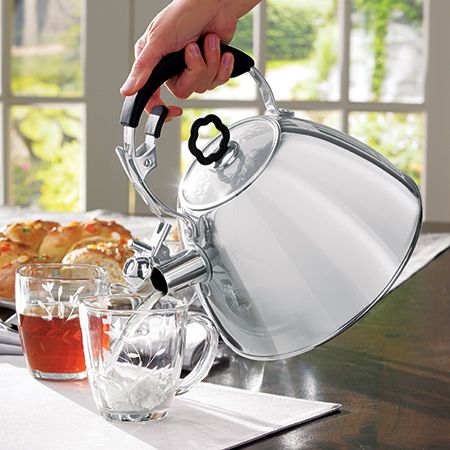Kettles turn off automatically using a heat-sensitive device called a thermostat. When the water reaches boiling point, the thermostat triggers the kettle to turn off.
A kettle’s ability to turn off automatically is an essential safety feature that prevents the water from boiling dry and causing a fire hazard. This function is made possible by a heat-sensitive device called a thermostat, which is embedded within the kettle.
When the water inside the kettle reaches the boiling point, the thermostat detects the high temperature and triggers the kettle to turn off, ensuring that the water does not continue to heat and the kettle does not overheat. Understanding how kettles know when to turn off provides insight into their safe and efficient operation, making them a must-have appliance in any kitchen.
The Science Behind Kettle Auto Shut-off Systems
Kettles utilize the science of boiling points to determine when to turn off. When water reaches its boiling point, which is approximately 212°F (100°C) at standard atmospheric pressure, it begins to vaporize and transition into steam. At this point, the kettle’s auto shut-off system is triggered, preventing overheating and potential hazards.
Pressure and temperature sensors serve as crucial components in the functioning of kettle auto shut-off systems. These sensors monitor the internal conditions of the kettle, detecting when the water has reached the boiling point or if there is a buildup of excessive pressure, thereby signaling the heating element to shut off and preventing a boil-over or damage to the kettle.
The thermodynamics of heating and cooling play a significant role in the auto shut-off mechanism of kettles. As the water heats up, it absorbs thermal energy, causing the temperature to rise until it reaches the boiling point. Once the boiling point is reached, the heat transfer shifts to the surrounding atmosphere, leading to a decrease in the temperature of the heating element and triggering the shut-off system.
The Role Of Automatic Shut-off Mechanisms
Safety Features And Preventing Accidents
When we talk about kettles and their automatic shut-off mechanisms, safety is a top priority. Kettles are equipped with automatic shut-off features that play a crucial role in preventing accidents. This safety feature ensures that the kettle switches off automatically once the water reaches its boiling point, thereby minimizing the risk of accidental spills or fires caused by overheating or boiling dry.
Energy Efficiency And Environmental Impact
Considering the energy efficiency and environmental impact, automatic shut-off mechanisms in kettles serve a dual purpose. By shutting off the kettle at the right time, these mechanisms help conserve energy and reduce electricity consumption. This not only lowers utility costs for consumers but also contributes to a greener environment by reducing overall energy usage.

Credit: www.space.com
Frequently Asked Questions On How Do Kettles Know When To Turn Off
How Do Kettles Automatically Turn Off?
Kettles are equipped with a thermostat that detects the boiling point of water and triggers an automatic shutdown. Once the water reaches the desired temperature, the kettle turns off to prevent overheating. This feature ensures safety and energy efficiency.
Can Kettles Switch Off Without Human Intervention?
Yes, modern kettles are designed with an automatic shut-off function. The built-in mechanism detects when the water reaches the boiling point and turns off the heating element, eliminating the need for manual intervention. This feature enhances convenience and minimizes the risk of accidents.
What Technology Allows Kettles To Turn Off On Their Own?
Kettles utilize a thermostat and heat-sensitive devices to enable automatic shut-off. Once the water inside the kettle reaches the boiling point, these components sense the temperature change and trigger the mechanism to turn off the heating element. This technology promotes energy conservation and ensures safety.
Conclusion
Kettles use a thermostat to detect when water reaches boiling point. The built-in thermostat triggers the kettle to turn off, preventing water from overboiling. This simple yet smart technology ensures convenience, energy efficiency, and safety. Understanding how kettles work enhances the everyday experience of using these indispensable kitchen appliances.




